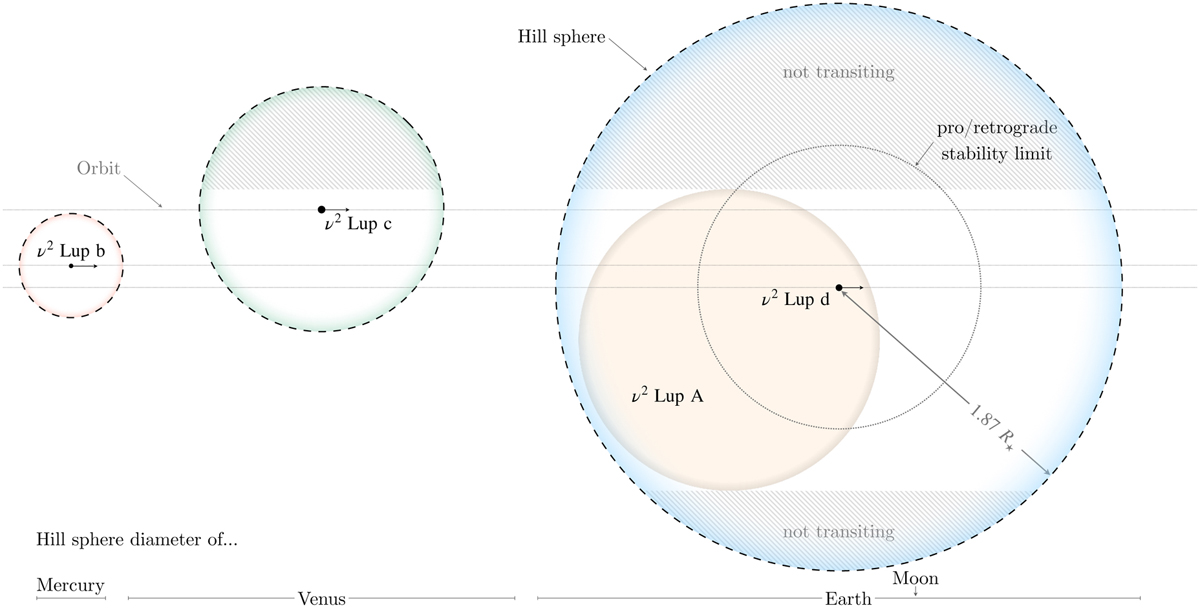Fig. 1

Download original image
Comparison of the sizes of the Hill spheres (dashed circles) for the three v2 Lup planets. Planet d is represented while transiting the star (ivory white disc). The respective orbital positions of the planets are not representative of their positions during the observations; only their transit impact parameters are considered. The Hill sphere radius of v2 Lup d (1.87 R★ or 0.0092 au or 9.1 h) is almost equal to the length of the planet transit chord. Because the Hill sphere of v2 Lup d is larger than the star, some parts of it (hatched areas) do not transit: a highly inclined exomoon in these regions, close to maximum apparent separation, could remain undetectable during this single visit. Such a distant moon would most likely be on a stable retrograde orbit, as these non-transiting regions are mostly beyond the stability limit for prograde (circular) orbits, represented at half the Hill sphere radius (Domingos et al. 2006) by the dotted circle. The diameters of the Hill spheres of Mercury, Venus, and Earth are shown for comparison; the location of the Moon within Earth’s Hill sphere is indicated.
Current usage metrics show cumulative count of Article Views (full-text article views including HTML views, PDF and ePub downloads, according to the available data) and Abstracts Views on Vision4Press platform.
Data correspond to usage on the plateform after 2015. The current usage metrics is available 48-96 hours after online publication and is updated daily on week days.
Initial download of the metrics may take a while.


